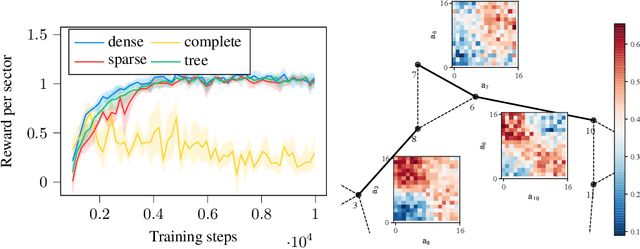Shruti Bothe
Towards Green AI-Native Networks: Evaluation of Neural Circuit Policy for Estimating Energy Consumption of Base Stations
Apr 03, 2025



Abstract:Optimization of radio hardware and AI-based network management software yield significant energy savings in radio access networks. The execution of underlying Machine Learning (ML) models, which enable energy savings through recommended actions, may require additional compute and energy, highlighting the opportunity to explore and adopt accurate and energy-efficient ML technologies. This work evaluates the novel use of sparsely structured Neural Circuit Policies (NCPs) in a use case to estimate the energy consumption of base stations. Sparsity in ML models yields reduced memory, computation and energy demand, hence facilitating a low-cost and scalable solution. We also evaluate the generalization capability of NCPs in comparison to traditional and widely used ML models such as Long Short Term Memory (LSTM), via quantifying their sensitivity to varying model hyper-parameters (HPs). NCPs demonstrated a clear reduction in computational overhead and energy consumption. Moreover, results indicated that the NCPs are robust to varying HPs such as number of epochs and neurons in each layer, making them a suitable option to ease model management and to reduce energy consumption in Machine Learning Operations (MLOps) in telecommunications.
Coordinated Reinforcement Learning for Optimizing Mobile Networks
Sep 30, 2021



Abstract:Mobile networks are composed of many base stations and for each of them many parameters must be optimized to provide good services. Automatically and dynamically optimizing all these entities is challenging as they are sensitive to variations in the environment and can affect each other through interferences. Reinforcement learning (RL) algorithms are good candidates to automatically learn base station configuration strategies from incoming data but they are often hard to scale to many agents. In this work, we demonstrate how to use coordination graphs and reinforcement learning in a complex application involving hundreds of cooperating agents. We show how mobile networks can be modeled using coordination graphs and how network optimization problems can be solved efficiently using multi- agent reinforcement learning. The graph structure occurs naturally from expert knowledge about the network and allows to explicitly learn coordinating behaviors between the antennas through edge value functions represented by neural networks. We show empirically that coordinated reinforcement learning outperforms other methods. The use of local RL updates and parameter sharing can handle a large number of agents without sacrificing coordination which makes it well suited to optimize the ever denser networks brought by 5G and beyond.
Neuromorphic AI Empowered Root Cause Analysis of Faults in Emerging Networks
May 04, 2020



Abstract:Mobile cellular network operators spend nearly a quarter of their revenue on network maintenance and management. A significant portion of that budget is spent on resolving faults diagnosed in the system that disrupt or degrade cellular services. Historically, the operations to detect, diagnose and resolve issues were carried out by human experts. However, with diversifying cell types, increased complexity and growing cell density, this methodology is becoming less viable, both technically and financially. To cope with this problem, in recent years, research on self-healing solutions has gained significant momentum. One of the most desirable features of the self-healing paradigm is automated fault diagnosis. While several fault detection and diagnosis machine learning models have been proposed recently, these schemes have one common tenancy of relying on human expert contribution for fault diagnosis and prediction in one way or another. In this paper, we propose an AI-based fault diagnosis solution that offers a key step towards a completely automated self-healing system without requiring human expert input. The proposed solution leverages Random Forests classifier, Convolutional Neural Network and neuromorphic based deep learning model which uses RSRP map images of faults generated. We compare the performance of the proposed solution against state-of-the-art solution in literature that mostly use Naive Bayes models, while considering seven different fault types. Results show that neuromorphic computing model achieves high classification accuracy as compared to the other models even with relatively small training data
 Add to Chrome
Add to Chrome Add to Firefox
Add to Firefox Add to Edge
Add to Edge